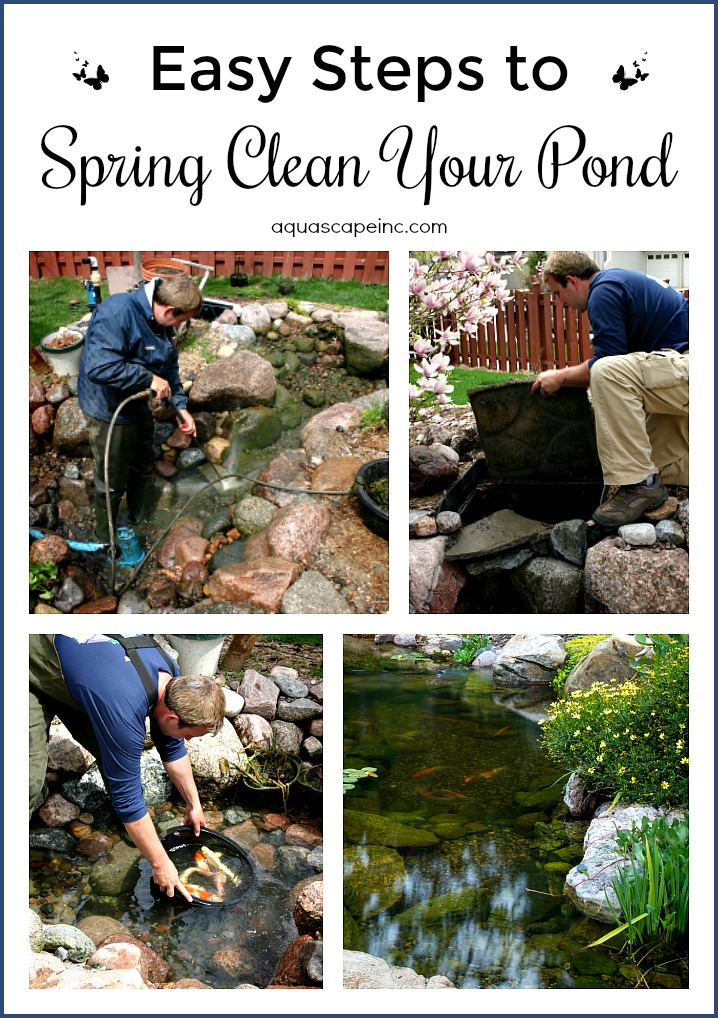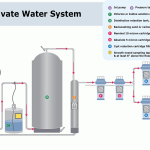Having a pond in your garden or backyard can be a beautiful addition to your outdoor space. However, maintaining clean pond water is essential for the health of your aquatic plants and fish. In this guide, we will discuss various methods and tips on how to effectively clean your pond water.

Credit: www.aquascapeinc.com
1. Remove Debris Regularly
One of the simplest ways to keep your pond water clean is by regularly removing debris such as leaves, twigs, and other organic matter. You can use a skimmer net to scoop out any floating debris on the surface of the water. This will prevent the buildup of organic material that can decompose and contribute to water pollution.
2. Use a Pond Vacuum
If there is a significant amount of debris at the bottom of your pond, consider using a pond vacuum to remove sludge and muck. A pond vacuum is a handy tool that can help you clean the pond without draining the water completely. It is especially useful for removing debris from hard-to-reach areas.
3. Install a Filtration System
Investing in a good filtration system is crucial for maintaining clean pond water. There are different types of filtration systems available, including mechanical, biological, and UV filters. Mechanical filters remove solid waste, biological filters break down harmful substances, and UV filters eliminate algae and bacteria.
4. Add Aquatic Plants
Aquatic plants not only add beauty to your pond but also help in keeping the water clean. Plants like water lilies, water hyacinth, and duckweed absorb excess nutrients from the water, which can otherwise lead to algae blooms and poor water quality. Make sure to choose the right plants for your pond size and conditions.
5. Monitor Water Quality
Regularly testing the water quality of your pond is essential for maintaining a healthy aquatic environment. You can use water testing kits to check parameters such as pH, ammonia, nitrites, and nitrates. Monitoring these levels will help you identify any issues early on and take corrective measures.
6. Perform Partial Water Changes
Occasionally, it is recommended to perform partial water changes to refresh the pond water. Remove a portion of the old water and replace it with fresh, dechlorinated water. This will help dilute any accumulated pollutants and improve water clarity.
7. Control Algae Growth
Algae growth is a common problem in ponds, especially during the warmer months. To control algae blooms, you can use algaecides, barley straw, or beneficial bacteria. It is important to address algae growth promptly to prevent it from overtaking the pond and causing water quality issues.

Credit: fncponds.com
8. Avoid Overfeeding Fish
Overfeeding fish can lead to excess waste production, which can pollute the pond water. Make sure to feed your fish only the amount they can consume in a few minutes. Remove any uneaten food to prevent it from decomposing and releasing harmful substances into the water.
9. Clean Pond Filters Regularly
To ensure the efficient operation of your pond filtration system, it is important to clean the filters regularly. Follow the manufacturer’s instructions for maintenance and cleaning procedures. Clogged filters can reduce the effectiveness of the filtration system and compromise water quality.
10. Consider Adding Beneficial Bacteria
Beneficial bacteria play a vital role in breaking down organic waste and maintaining a healthy pond ecosystem. You can introduce beneficial bacteria products specifically designed for ponds to help in the decomposition of sludge and excess nutrients. This can improve water clarity and reduce odors.
Conclusion
Maintaining clean pond water is essential for the overall health and well-being of your pond ecosystem. By following the tips and methods outlined in this guide, you can ensure that your pond water remains clear, healthy, and vibrant. Remember to regularly monitor water quality, remove debris, and utilize filtration systems to create a balanced and thriving aquatic environment.



